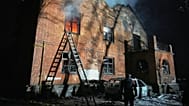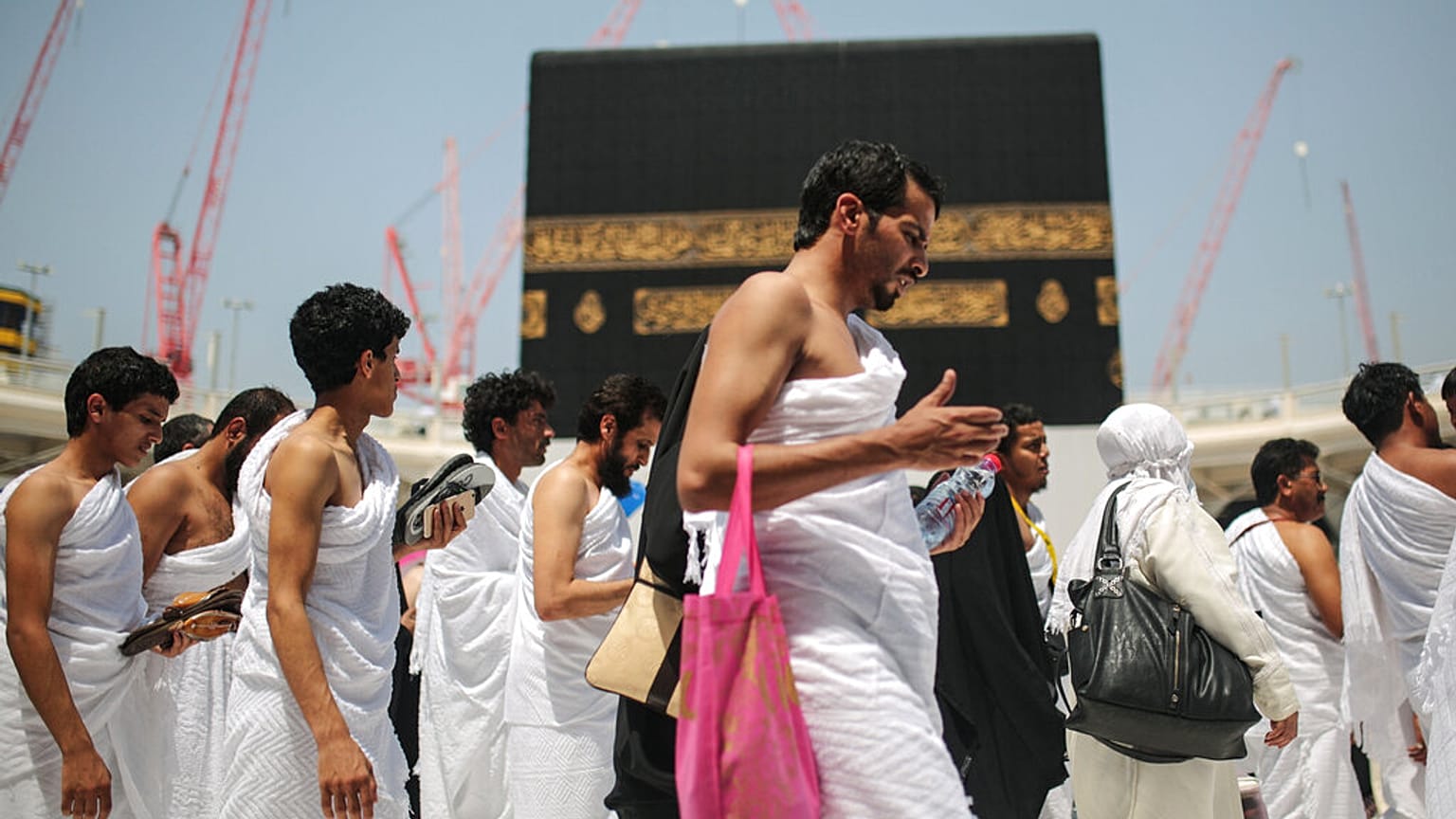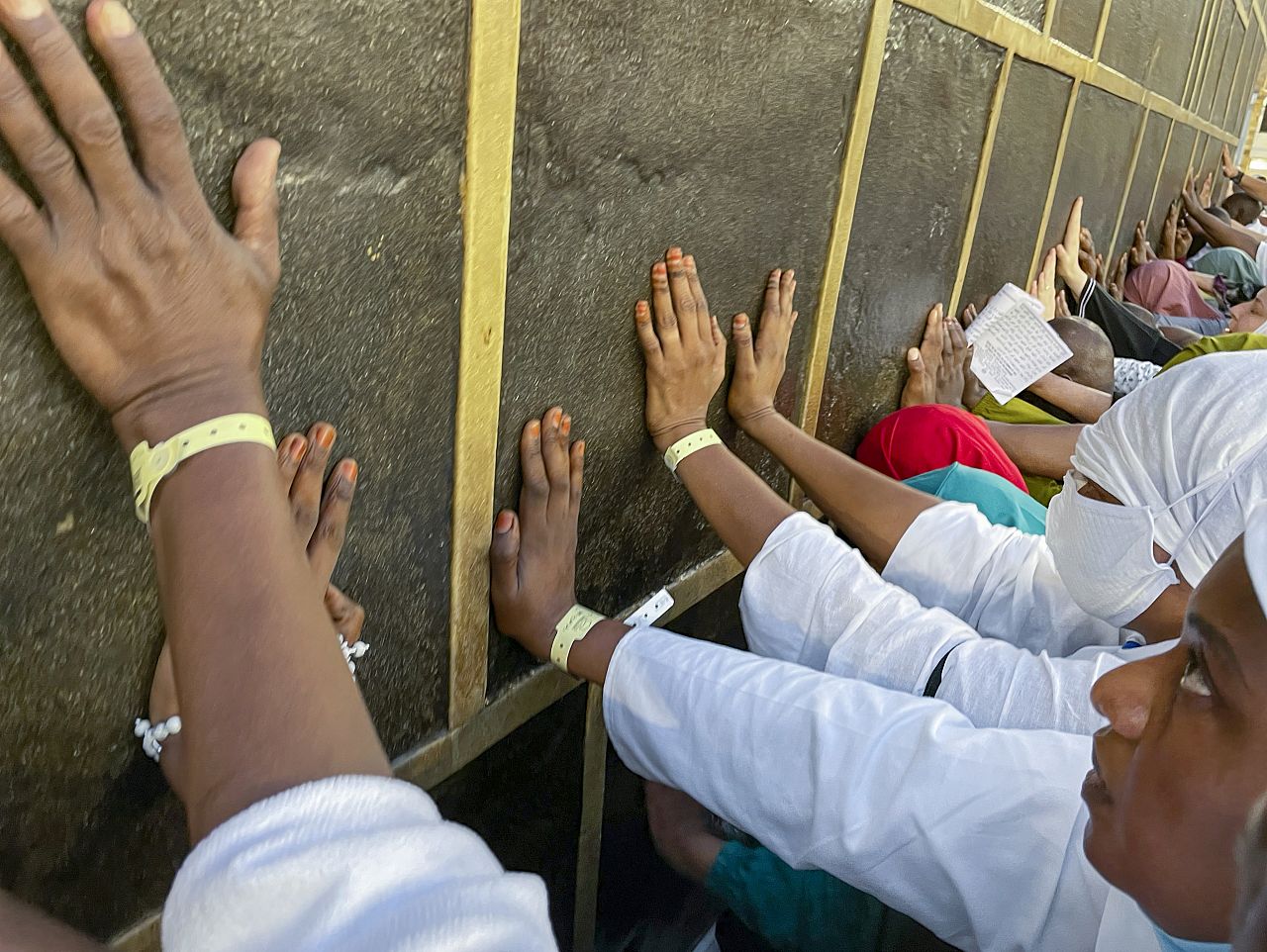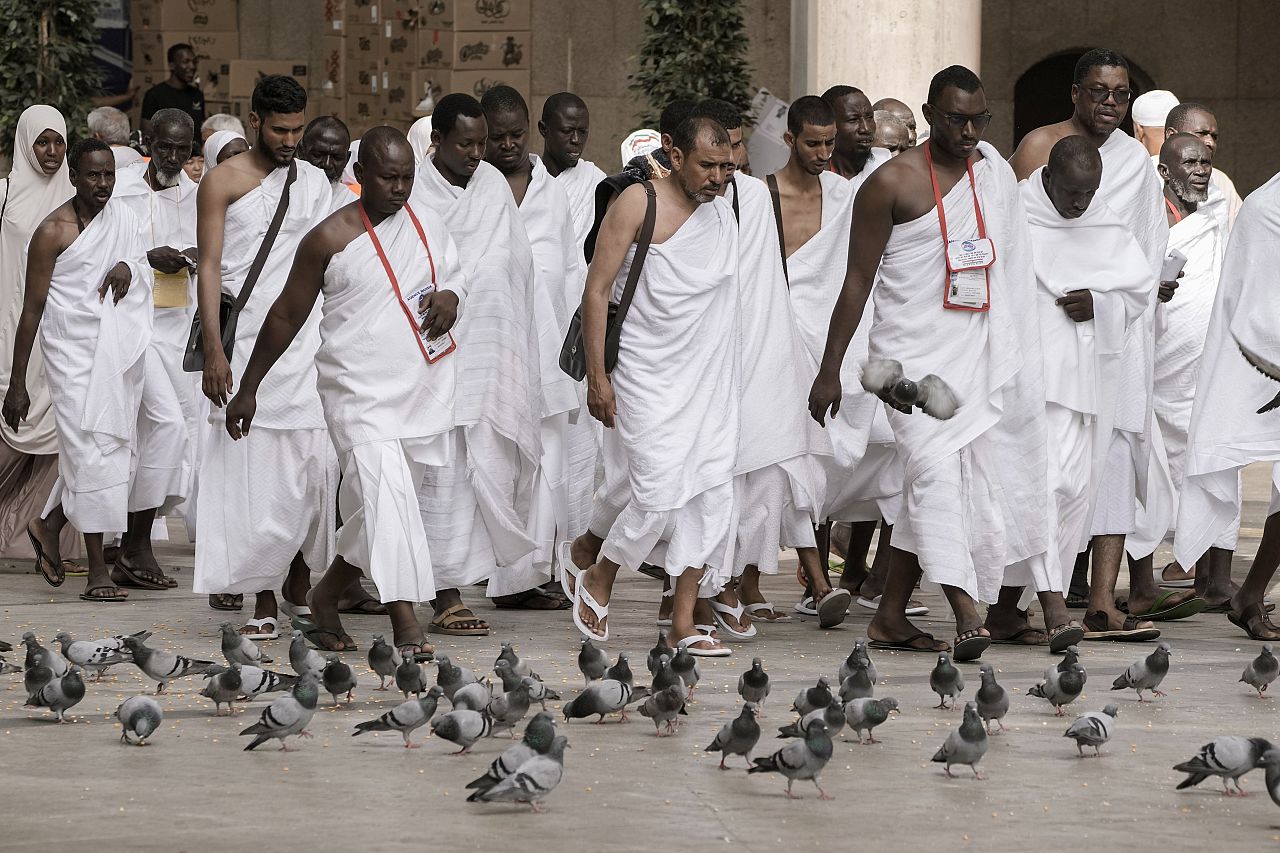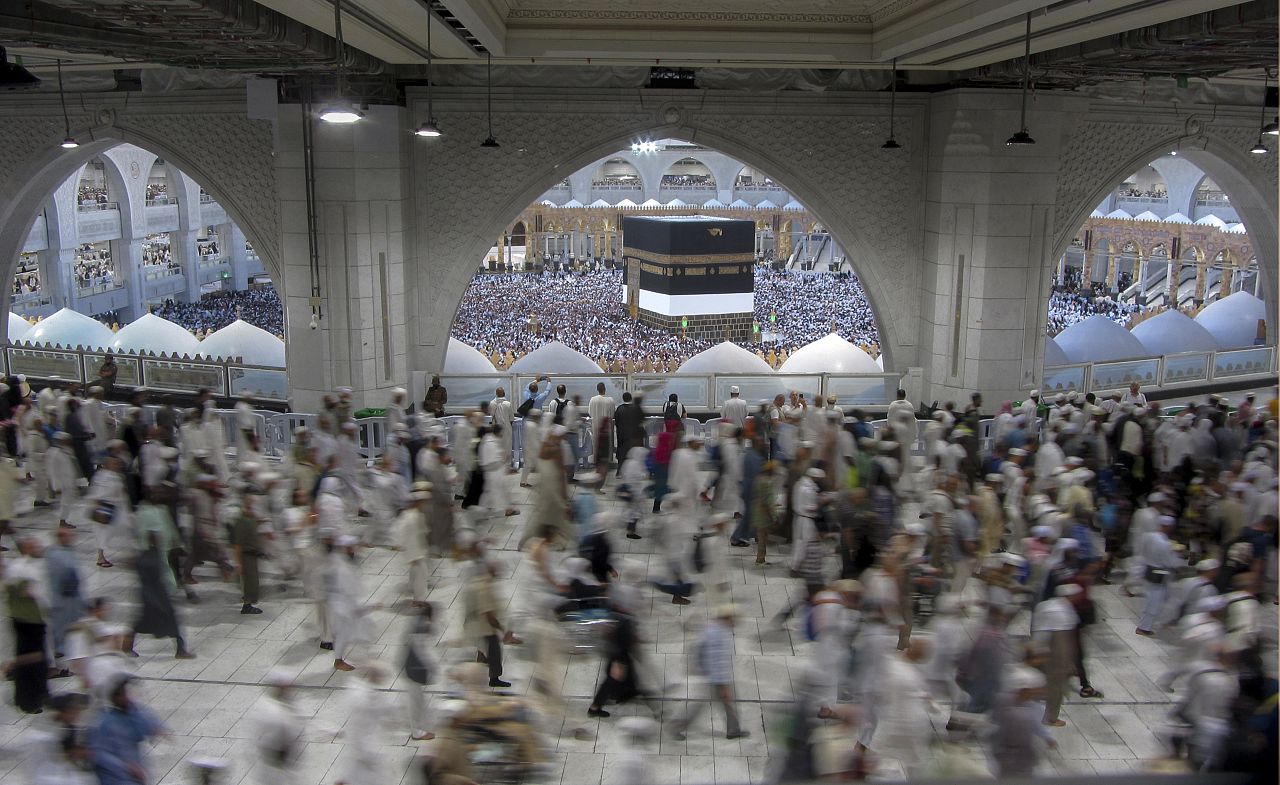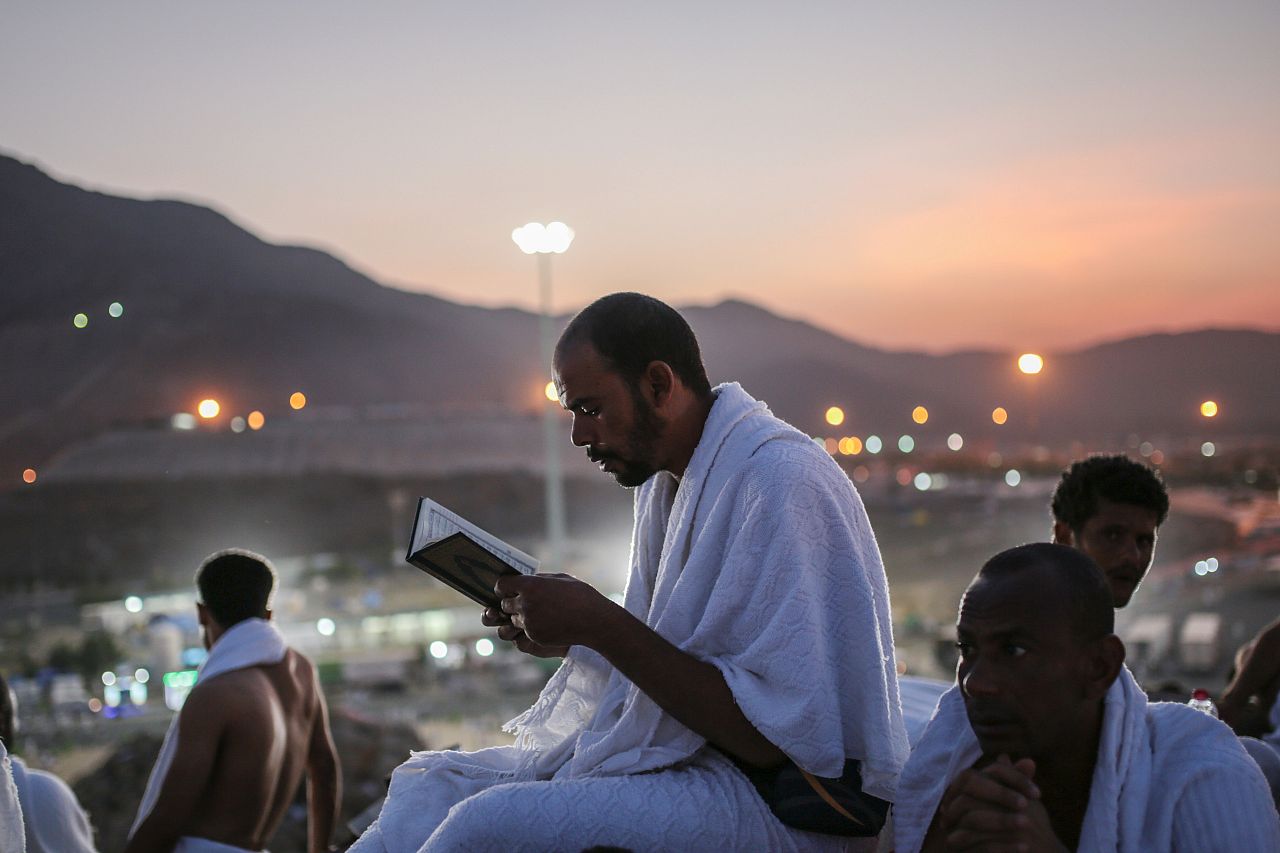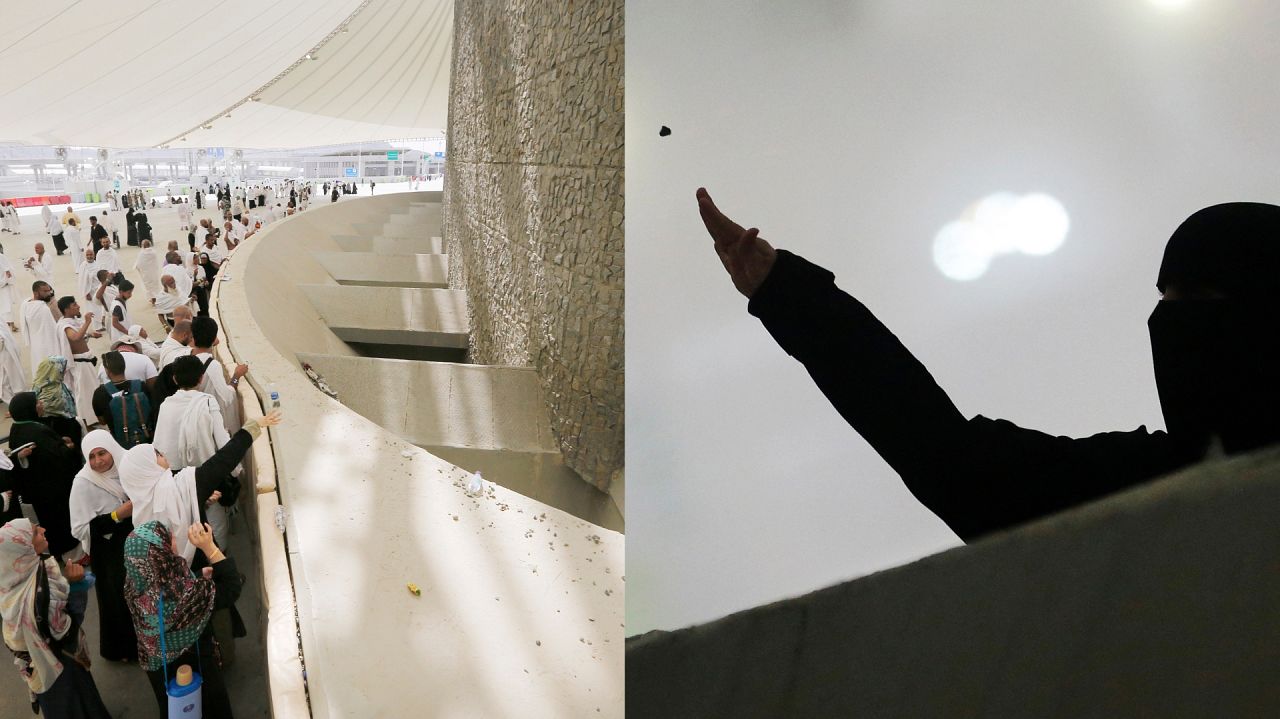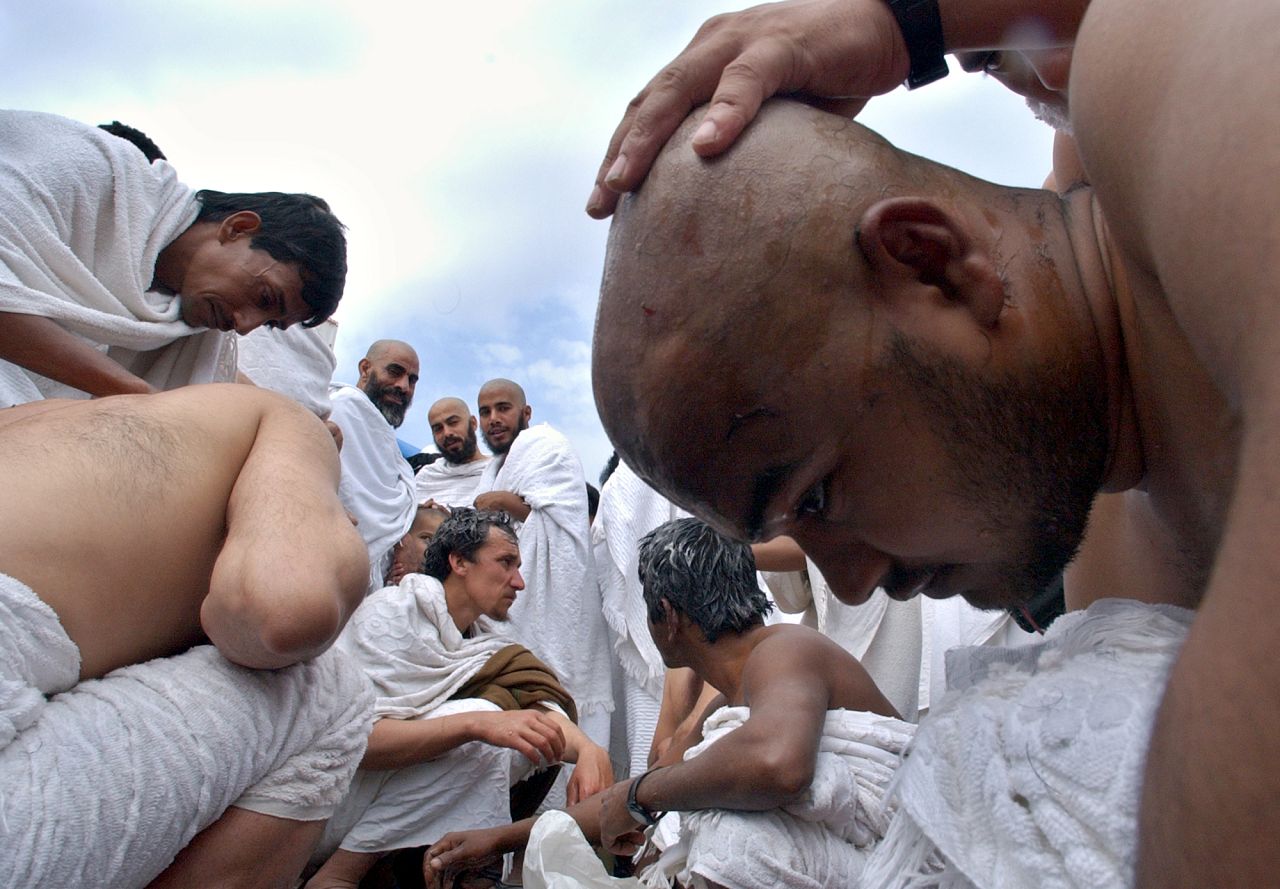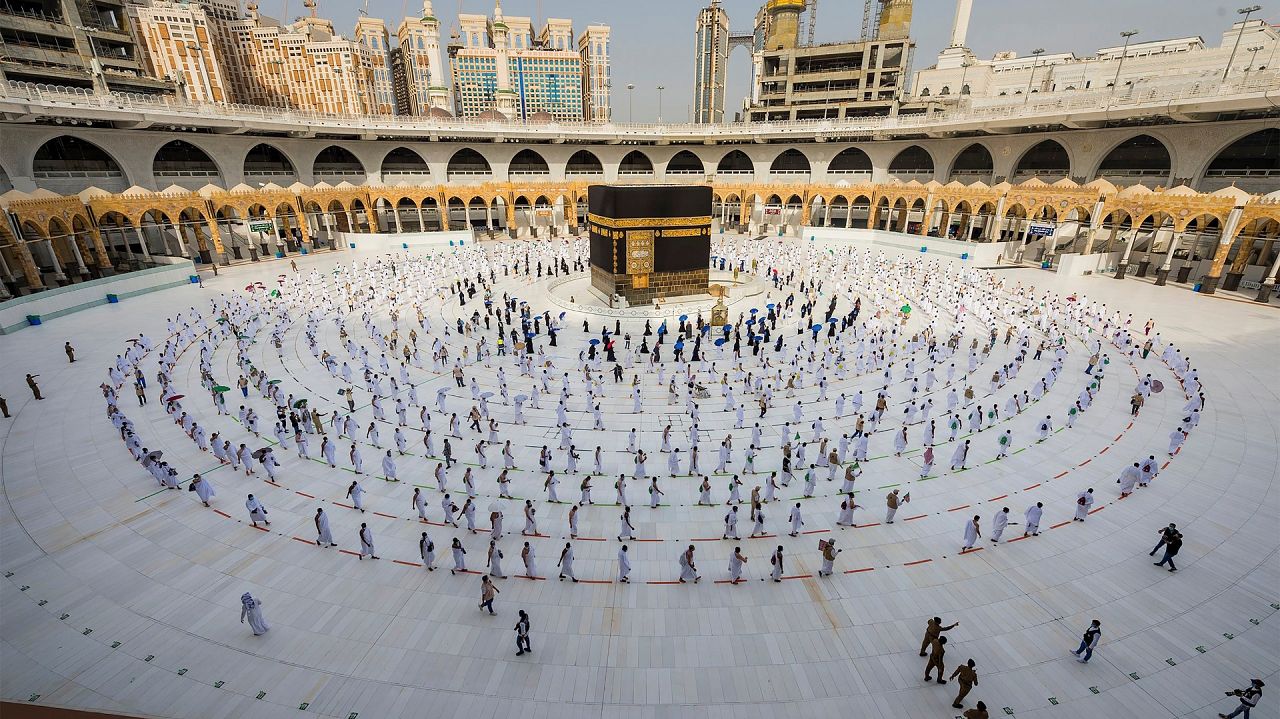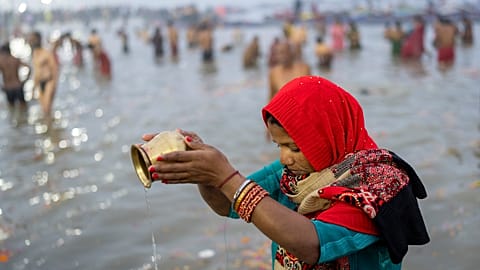Why are millions of Muslims arriving in Saudi Arabia this week? Here's what you need to know about Hajj, Islam's sacred pilgrimage.
Some two million Muslims from all corners of the world have arrived in Saudi Arabia to begin their Hajj pilgrimage, one of humanity's largest religious gatherings.
This year’s Hajj is the first since the lifting of all restrictions related to the COVID-19 pandemic, and Saudi officials are predicting record-breaking crowds.
The Hajj is one of the five pillars of Islam, and every practising Muslim is expected to make the five-day journey at least once in their lives, as long as they're physically and financially able.
It’s considered a profound spiritual experience for pilgrims, who believe it absolves them of sins, brings them closer to God and unites the world’s 1.8 billion Muslims.
Here’s a Euronews Culture guide to understanding the Hajj and what to expect this week.
What is the historic significance of Hajj in Islam?
The Hajj was first inaugurated by the Prophet Muhammad in the 7th century, and has been observed by Muslims annually ever since. It begins during the 12th and final month of the Islamic lunar calendar, meaning that it can fall at different times in different years.
The Hajj traces the journey of Ibrahim and Ismail, or Abraham and Ishmael as they are known in the Christian and Jewish traditions.
It begins in Mecca, Islam's holiest site, which has been controlled by Saudi Arabia since the 1920s. The Quran states that this is where Ibrahim was called upon to sacrifice his son Ismail as a test of faith. Allah, or God, prevented it from happening at the last minute.
The Kaaba, which is the large cube-shaped structure that's Muslims circle around during the Hajj, is said to have been built by Ibrahim and Ismail.
Muslims do not worship the Kaaba, but they do consider it their most sacred place and a powerful symbol of unity and monotheism. No matter where they are in the world, Muslims will face the Kaaba during their daily prayers.
How do Muslims prepare for their Hajj?
Some pilgrims spend their whole lives saving up for the journey or wait years before getting a permit, which Saudi authorities distribute to countries based on a quota system. Travel agents offer packages catering to all income levels, and charities assist needy pilgrims.
Once they’ve embarked on their journey, the first step of a Muslim’s Hajj is setting an intention and entering a state of purity, called ihram. This is meant to take place as the pilgrim enters the outer borders of Mecca.
Women cover their hair, wear loose-fitting clothing and skip wearing makeup. Men wear modest garments made from two unstitched pieces of fabric, which are meant to erase the gap between rich and poor.
Pilgrims cannot cut their hair, trim their nails or have sex while in the state of ihram. They’re also not meant to argue or fight, which is often difficult given the staggering temperatures and huge crowds in Saudi Arabia during Hajj.
Many Muslims will also visit Medina, where the Prophet Muhammad is buried and where he built the first mosque, before heading to Mecca.
What events take place over the five days of Hajj?
Day 1 officially begins with the circling of the Kaaba, called Tawaf. Pilgrims walk around the Kaaba counterclockwise seven times while reciting prayers.
After, they'll walk between two hills in a reenactment of Hagar's search for water for her son, Ismail, a story that occurs in different forms in Muslim, Christian and Jewish traditions.
All of this takes place inside Mecca's Grand Mosque – the world's largest – which encompasses the Kaaba and the two hills.
On Day 2, pilgrims head to Mount Arafat, some 20 km east of Mecca, for what’s considered one of the most important days in the Islamic calendar. Here, they stand in prayer from noon to sunset, asking God to forgive their sins.
This site is particularly important to Muslims because it’s where the Prophet Muhammad gave his last sermon. Many Muslims, even those who are not taking part in the Hajj, will fast on the Day of Arafat.
At sunset, pilgrims will head to Muzdalifa, 9 km west of Arafat, where they begin collecting pebbles to use in the next day’s rites.
On Day 3, which coincides with the start of the feast of Eid al-Adha in the Islamic calendar, pilgrims take part in a symbolic "Stoning of the Devil" in the valley of Mina.
They'll throw seven pebbles at the largest of three columns, known as Jamarat al-Aqaba, which is believed to be the site where the devil appeared to tempt Ibrahim into ignoring God’s command to sacrifice his son.
Pilgrims are also meant to sacrifice an animal on this day and distribute the meat to the poor, a rite known as nahr. In Saudi Arabia, they can buy a voucher or coupon that says a sacrifice has been made in their name.
The Hajj ends with a final circling of the Kaaba and more casting of stones at Mina. Men will often shave their heads and women will clip a lock of hair, signalling renewal.
Many who have completed the pilgrimage will take the title of "hajj" or "hajja" – a great honour especially in more traditional communities.
Has there ever been a year the Hajj didn’t take place?
This year the Hajj has returned to its full capacity, after disruptions due to the coronavirus pandemic. In 2020, only around 1,000 pilgrims were allowed to make the journey due to sanitary concerns, and strict screening and quarantine measures were put in place.
But the recent pandemic wasn't the first time the Hajj had been disrupted.
One of the earliest major interruptions to the Hajj took place in 930 AD, when a sect of Ismailis, a minority Shiite community, known as the Qarmatians raided Mecca and accused the Hajj of being a pagan ritual.
The Hajj was suspended for 20 years, until the Abbasid dynasty, which ruled large swathes of the Middle East and North Africa, paid a ransom for it to restart.
Diseases like the plague kept pilgrims from making the then-treacherous journey to Mecca in the late 900s AD. And cholera claimed the lives of many pilgrims throughout the 19th century.


